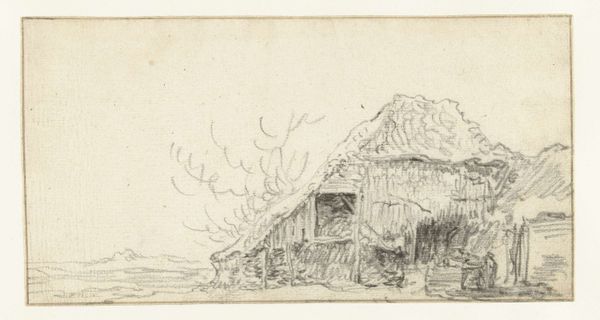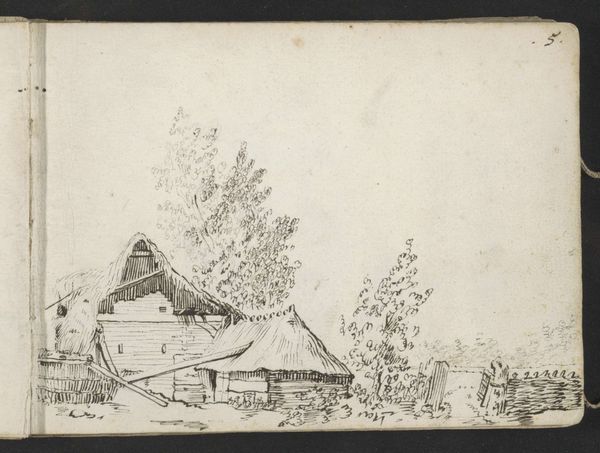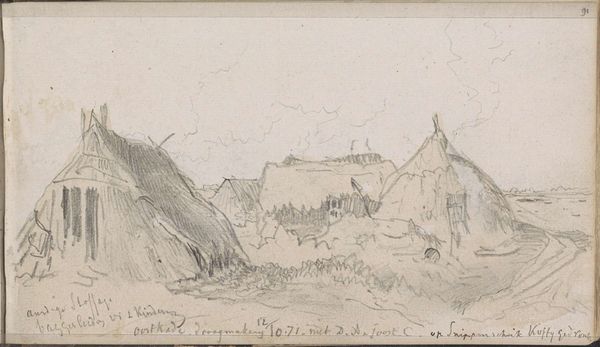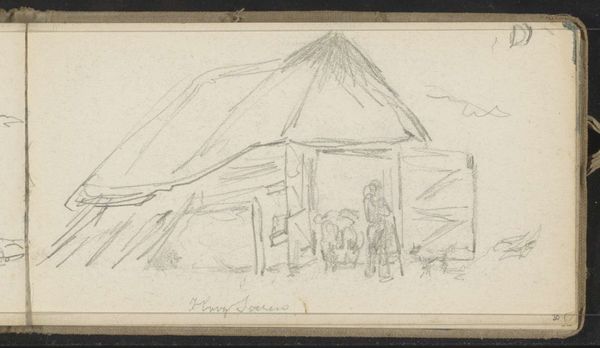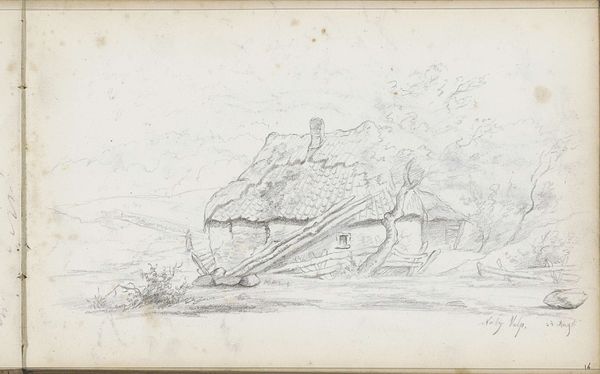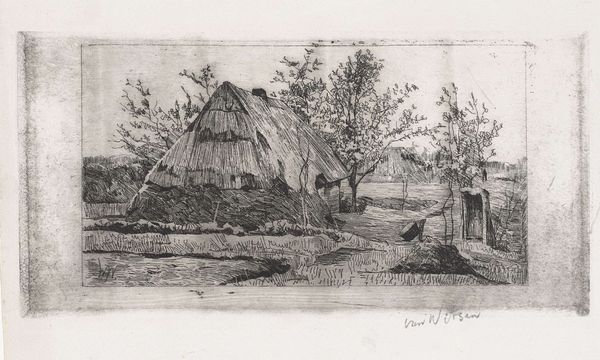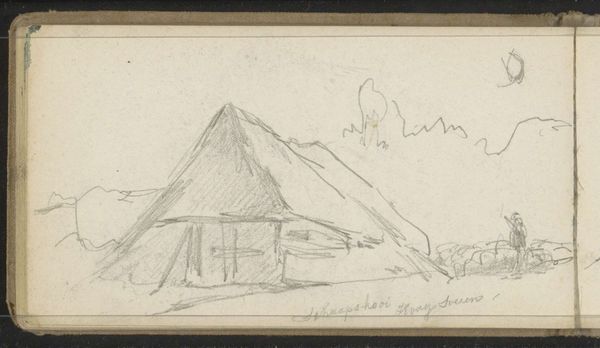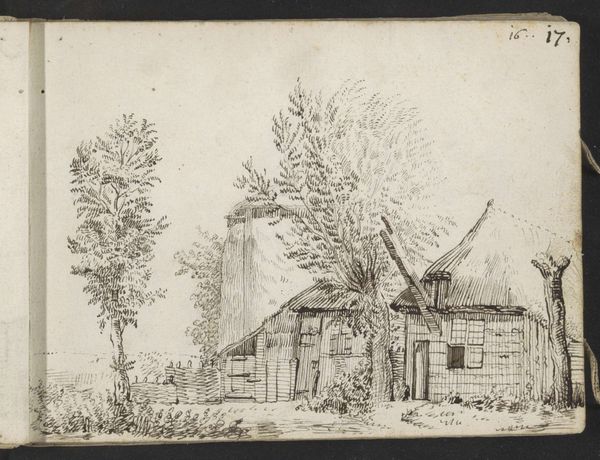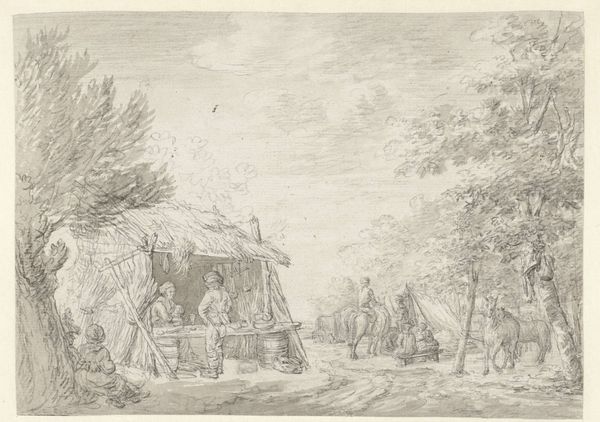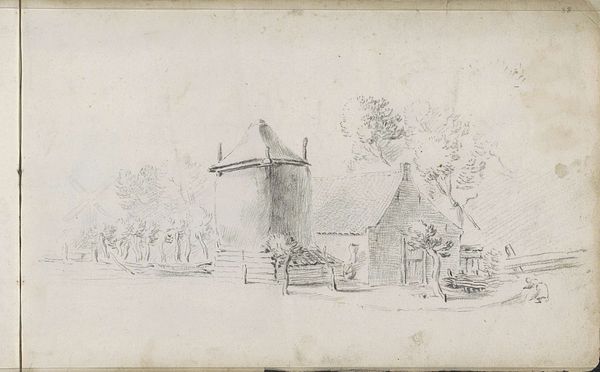
drawing, paper, ink, pencil
#
drawing
#
sketch book
#
landscape
#
paper
#
ink
#
romanticism
#
pencil
Dimensions: height 101 mm, width 179 mm
Copyright: Rijks Museum: Open Domain
Curator: We're looking at "Hooiberg", a drawing in ink and pencil on paper by Dirk Hussem, estimated to have been created sometime between 1787 and 1817. Editor: My initial reaction is that there's a charming simplicity to the drawing. The lines are sparse, but they capture a sense of rural, perhaps even romantic, isolation. I'm curious, what can we say about the hooiberg structure itself? What purpose did these haystacks serve in Hussem’s time? Curator: Hooibergs, these structures with their characteristic adjustable roofs, were crucial for agriculture in the Netherlands, enabling farmers to protect hay from the frequent rainfall. Examining Hussem’s lines, one really begins to note how deliberately and cleverly they've been stacked here, with labor central to this agrarian landscape. Hussem isn't just drawing a pretty scene, but also implying the system of making. Editor: That’s a compelling point, focusing our attention on the act of making the drawing as a depiction of material culture itself. How might the context of Romanticism inform our interpretation here, politically? The choice of subject, and Hussem's apparent appreciation for it, speaks volumes, given how agricultural labor and technology developed throughout this era. Curator: I think Hussem consciously rejects an overly polished style here, emphasizing immediacy over the established drawing techniques from art academies. Look closely; you begin to recognize subtle yet powerful elements that echo social developments concerning art during this period: a desire to emphasize what lies outside mainstream cultural channels. Editor: It seems that Hussem found both beauty and significance in the everyday landscape of rural labor, which underscores the changing social values attributed to certain genres. Thanks for providing some thought-provoking insight here. Curator: It's a potent reminder to look for beauty and ingenuity in everyday things— the structure of that stack and its presence as something valued tells its own story through artistic reinterpretation.
Comments
No comments
Be the first to comment and join the conversation on the ultimate creative platform.
